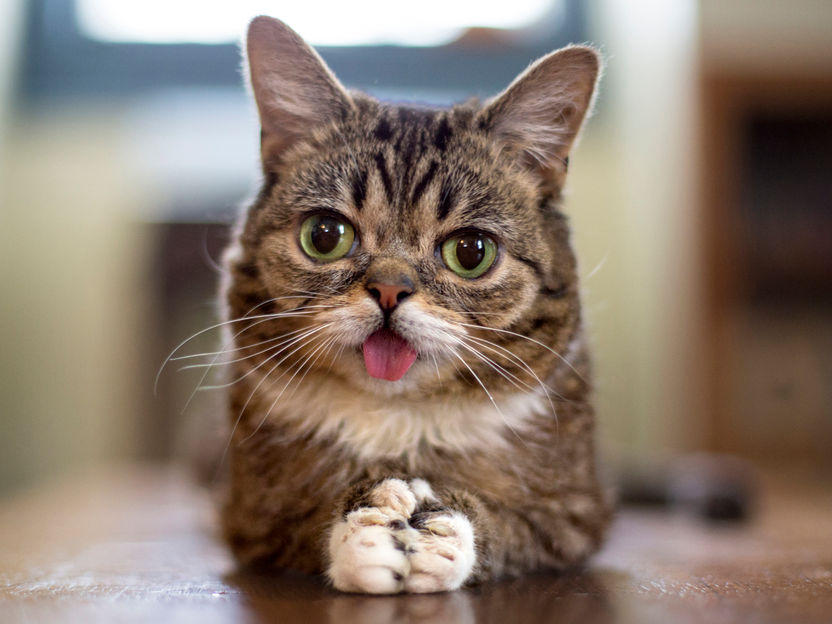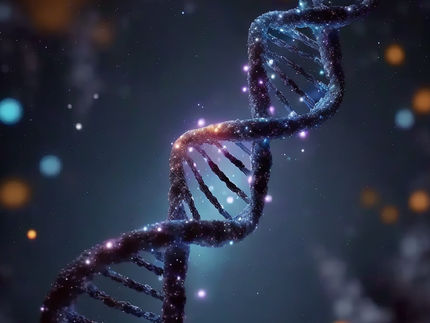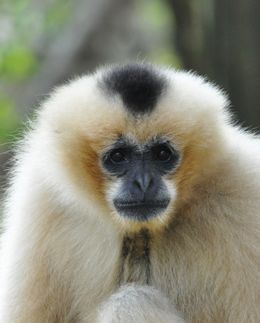Decoding Lil BUB: Crowdfunded project reveals genome of internet celebrity cat
Lil BUB has drawn millions of followers across the internet for her cute appearance. Behind the celebrity cat’s unique features is a combination of two rare genetic variants, three molecular biologists from Germany and the US report. The results of their crowdfunded project “LilBUBome” are now available on the preprint server bioRxiv.

Lil BUB
lilbub.com/Mike Bridavsky
Lil BUB is a cat with unusual looks: She is very small, as she stopped growing at seven months, her snout is short and her tongue sticks out. She has extra digits on each paw and has been diagnosed with infantile malignant osteopetrosis, a rare disease that causes denser bones with age. Because of her cute appearance, Lil BUB has drawn millions of followers across the internet. She has been using this fame to raise money for animal shelters and welfare organizations, helping cats in need.
Now, three geneticists from Germany and the United States reveal their analysis of Lil BUB’s genome sequence. They discovered that Lil BUB carries two distinct rare variants in her DNA. One is responsible for her extra digits (polydactyly), the other for her bone disorder (osteopetrosis), which also causes her stature and short snout.
A crowdfunding effort made it possible to sequence the genome
In 2014, molecular biologists Dr. Darío G. Lupiáñez (Berlin Institute for Medical Systems Biology at the Max Delbrück Center for Molecular Medicine in Berlin), Dr. Daniel Ibrahim (Max Planck Institute for Molecular Genetics in Berlin), and Dr. Orsolya Symmons (University of Pennsylvania in Philadelphia) stumbled across one of the cat’s internet videos. “The project literally began with Daniel telling me: You need to watch this,” Lupiáñez remembers. They realized Lil BUB´s unique features might be caused by genetic mutations similar to those the three scientists were studying in human patients and mice with rare bone diseases.
“We were curious and wanted to look at her genome. Since developmental processes, like bone formation, are quite conserved across mammals, we hypothesized that identifying the causative mutations underlying BUB´s phenotypes might improve our understanding of these rare diseases also in humans”, says Ibrahim. Lil BUB`s owner Mike Bridavsky was thrilled about the idea and agreed to provide a blood sample for the analysis. Subsequently, the scientists engaged with the public and raised more than $8,000 in a crowdfunding effort called “LilBUBome”.
The scientists started what they call “a living, organic project”, informing and interacting with the public about their continuous progress and about the hurdles they faced, using a dedicated blog and social media. They ran this project in parallel to their main research, studying rare human diseases and gene regulation.
Shedding light on Lil BUB’s ancestry
Even before they sequenced the genome, Lupiáñez, Ibrahim and Symmons performed a preliminary screen and found that the cat’s extra digits stem from a known variant that controls the regulation of the Sonic hedgehog gene. It is the exact same variant associated with Ernest Hemingway’s cats, which are famous for having six toes on their front paws. A colony of about 50 descendants still has its home at the Ernest Hemingway Museum in Key West, Florida. “This is very exciting. Lil BUB is an orphan cat, as she was discovered as a feral kitten in rural Indiana. But, despite not having any knowledge about her relatives, her genome encodes information that sheds light on her possible distant ancestry and past,” says Symmons.
Identifying the genetic variant that causes Lil BUB's osteopetrosis took a bit longer: A first assessment of her genomic sequence revealed about six million potential differences between Lil BUB and the cat reference genome. As a second step, the scientists would have normally compared Lil BUB’s genome to the genomes of healthy relatives – but this was not possible in this case. “Instead, we were extremely lucky to work with geneticists specialized on human bone disorders,” reports Ibrahim. “They helped us to narrow down this huge amount of variants to a reduced list of potential candidates that we could evaluate individually.” Sifting through the data, the scientists identified a homozygous deletion of a single letter in the genetic code, which affects a gene that was previously linked to osteopetrosis in humans and mice.
One missing letter changes reading frame of whole gene
Genomes consist of nucleobases that are represented by a code of letters (G, C, A or T). Cells read and interpret these letters in consecutive triplets. In this instance, the mutation deletes an A in a C-A-T nucleobase sequence and the missing letter shifts the frame for reading the triplets for one position. For example, the sentence “She was ill” without the “h” would turn into “Sew asi ll”. The frameshift mutation affects a gene called RANK/TNFRSF11A, which is important for the proper function of osteoclasts – one of two cell types that remodel bone tissue throughout life. This results in an imbalance between bone formation and bone resorption, leading to excessive bone formation and ossification. Patients and mice with similar mutations in this gene display an overwhelming degree of overlap with BUB’s features.
To further validate the results, the team used data from the 99 Lives Consortium, a database containing genomic information of more than 100 cats, and confirmed that the identified variant was not present in any of the sequenced cats. “With this information in hand, we are as certain as we can be that this mutation causes Lil BUB's osteopetrosis,” says Lupiáñez. “However, there might be additional variants that contribute to certain aspects of the phenotype that we might have overlooked in the analysis,” adds Symmons. “We would be glad to have as many additional eyes as possible to look at Lil BUB´s genome. We hope that scientists with different backgrounds and expertise will also engage on this collaborative project.” For this reason, the scientists communicated their results through the pre-print platform BioRxiv and made the raw data freely available. As a next step, they will put their results through a peer-review process with the aim of publishing the results in an Open Access journal.
Improving genetic literacy
Open Science is central to the project. The LilBUBome team envisioned the potential of the initiative to serve as an educational and a science communication platform right from the beginning. “We wanted to explain how genomic information can be used to identify the molecular causes of rare diseases, and also highlight the challenges and limitations of DNA sequencing,” says Ibrahim. “We’ve already been contacted by teachers and lecturers who would like to use this as a hands-on example for genetic education,” says Symmons. “The whole project really has been a lot of fun and we reached so many people who normally have little contact with genetics. If some now understand genome sequencing a little better, we have definitely reached our goal," adds Lupiáñez.
Original publication
Mike Bridavsky, Heiner Kuhl, Arthur Woodruf, Uwe Kornak, Bernd Timmermann, Norbert Mages, 99 Lives Consortium, Darío G Lupiáñez, Orsolya Symmons, Daniel M Ibrahim; "Crowdfunded whole-genome sequencing of the celebrity cat Lil BUB identifies causal mutations for her osteopetrosis and polydactyly"; BioRxiv; 22.02.2019




















































